Text

🌕 Eric (@daohanfu): Following yesterday’s lunar eclipse and the Full Moon, I will summarize Chapter 1 of Dawat Yan Banquet, by beginning with the ending:
“When the Moon Rides the Tides of Time” is an interactive poetry, created in the concept of a web-based installation. FYI: I hid the project (clip 1) in the banquet and left a hint, have you found it?
According to folks who have seen my physical installations IRL, they often told me that my works were “full of stuff”. Inspired by this feedback and Felix Gonzalez-Torres’ works, I wanted to explore a more minimalist way or art form that is still “full-of-stuff”. This paradoxical relation helps me to realize my own contributions to the Dawat Yan Banquet which were presented as a mini trilogy. Moreover, this visual poem serves as both an ending and a beginning, just like the recurring cycles of our shared Moon.
Similarly, the concept of gathering and parting is relative to each other, as highlighted by this old Chinese proverb: “In our earthly world, there is no such a banquet that doesn’t end with parting (天下无有不散筵席)”, from Stories to Awaken the World (醒世恒言) by Feng, Meng-long (冯梦龙).
Clip 1: “When the Moon Rides the Tides of Time”; HTML/CSS, web-based interactive poetry
Image 2: Overlooking the Yueyaquan (Crescent Lake; 月牙泉) on a sand dune, in Dunhuang (敦煌), 2009.
--
The Dawat Yan Banquet can be accessed via: dawatyanbanquet.com, and supported by AGO X RBC Artist-In-Residence program.
#contemporaryart#dawatyanproject#dunhuang#chinese culture#visual poetry#art gallery of ontario#digital art#web art
3 notes
·
View notes
Text

The Art Gallery of Ontario (AGO) is proud to present the Dawat Yan Banquet as part of the AGOXRBC Artists in Residence Program, 2022.
Dawat (دعوت) and Yan (宴) imply “banquet” in Urdu and Chinese, respectively. The Dawat Yan Banquet explores the intersections of food, art and cultural history, from perspectives of Asian hospitality. Welcoming friends virtually from near and far, the exclusionary boundaries of the traditional banquet are lifted, as Dawat Yan Banquet transcends barriers of race, class, gender, sexual orientation and geography. Apart from developing a virtual web-based project (dawatyanbanquet.com), and a public archive (dawatyanproject.tumblr.com) the residency also culminated in a virtual gathering on April 26, 2022 at the AGO for an interactive, multimedia, potluck banquet feast.
The Dawat Yan Banquet is an ongoing process-based project hosted by Eric Chengyang and Mariam Magsi, with guest artist contributions by Ange Loft, Amin Alsaden, Niloufar Salimi, Karina Iskandarsjah & Abdullah Qureshi with community submissions by Shahina Khan and Gordan Sumanski.
Project website: dawatyanbanquet.com
IG: @dawatyanproject
Blog: dawatyanproject.tumblr.com
Dawat Yan Banquet was developed with the generous support of the AGOXRBC Artists in Residence Program, 2022
#AGO#ArtGalleryOfOntario#Toronto#food#art#history#culture#exhibition#panel#residency#process based#Dawat Yan Project#Dawat Yan Banquet#Banquet#Dawat Yan#Eric Chengyang#Mariam Magsi
4 notes
·
View notes
Text

Dinner for one, please
Abdullah Qureshi
Digital Photography, Time Lapse Video, Performance
2022
The Dawat Yan Banquet is proud to present “Dinner for one, please” by multidisciplinary artist, curator and educator, Abdullah Qureshi. Rooted in traditions of abstraction, Abdullah incorporates gestural, poetic and hybrid methodologies to address autobiography, trauma and sexuality through painting, filmmaking and immersive events.
For the Dawat Yan Banquet, Abdullah is exploring the intersections of queerness, South Asian visual and cultural histories, and hosting. In “Dinner for one, please” the artist engages with a variety of mediums, such as time-lapse video, digital photography and performance to disrupt the heteronormative traditions of banquets, in celebration of queer singlehood and liberatory sexuality.
Please visit dawatyanbanquet.com to experience “Dinner for one, please” by Abdullah Qureshi. Abdullah has also generously contributed his renowned film “Journey to CharBagh” to the Dawat Yan Banquet. The film is currently being screened on the banquet page.
“Dinner for one, please” was made with the generous support of the AGOxRBC Artist in Residence Program, 2022.
Credits:
Artistic Director and Concept: Abdullah Qureshi
Photographer and Editor: Mariam Magsi
Production Coordinator: Steven Tucker
#Dawat Yan Banquet#Dawat Yan Project#Dinner For One Please#Singlehood#queer spirit#queering the banquet#AGO#Art Gallery of Ontario#residency#art#contemporary art#digital media#lens based#conceptual#visual poetry
3 notes
·
View notes
Text

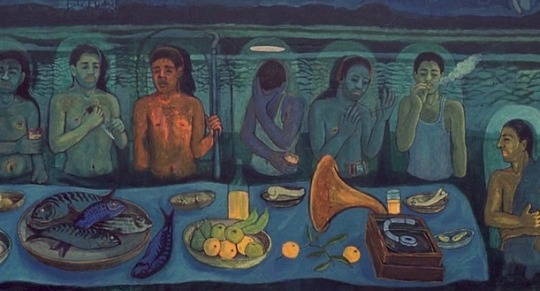

Image: “Every supper is the last supper there” by Anwar Saeed. Acrylics and Collage on Plywood. 4X8 ft. 1996
Guest Artist, Abdullah Qureshi shared this work by Pakistani artist, Anwar Saeed, in our recent brainstorming session for the Dawat Yan Banquet. While we have seen many historical paintings depicting “The Last Supper” Anwar Saeed’s work is a refreshing, thought-provoking, rebellious and contemporary take, as well as a unique approach to unpacking traditional, heteronormative banquets.
In “Identity and Sexuality: The Art of Anwar Saeed” Fatema writes: “In challenging the set norms of society, and the concept of social responsibility, Saeed ridicules and teases the "righteous guardians of morals" that one has acclaimed, through his paintings.”
Abdullah’s commissioned works for the Dawat Yan Banquet also disrupt the heteronormative and exclusionary boundaries of traditional banquets, especially within South Asian banquet contexts, where mainstream celebrations continue to be centred around the institution of the heteronormative, patriarchal family.
In the third image, we zoom into the painting toward the upper right corner, where a figure of the Burāq is evident. The Burāq is a creature in Islamic tradition that is believed to have carried Prophet Muhammad from Mecca to Jerusalem. Representations of the Burāq continue to recur in Abdullah’s performative and lens-based works.
Stay tuned, dear guests. “Journey to the CharBagh” and “Dinner for one, please” by Abdullah Qureshi will launch on Dawat Yan Banquet soon.
#Dawat Yan Banquet#Dawat Yan Project#Abdullah Qureshi#contemporary art#Anwar Saeed#banquet#Queer Banquet#painting#AGO#Art Gallery of Ontario#Identity#Disruption#LGBTQ#desiLGBTQ
8 notes
·
View notes
Text

How many persimmons should I pick?
Niloufar Salimi
10 x 16 inches, watercolour on paper
2022
Welcome, dear guests! The Dawat Yan Banquet is proud to present “How many persimmons should I pick?” by Niloufar Salimi (born in Shiraz, Iran and based in Toronto, Canada)
The artist uses drawing and minimal mixed media to form narratives that live in the interstices of certainty and ambiguity. Since the COVID-19 pandemic began, Salimi’s daily drawing practice has concentrated on the old, wild apple trees outside her apartment window. “One window for seeing/ One window for hearing/ One window for reaching into the heart of the earth” (Forough Farrokhzad). Through her unique artistic touch, Nilou is sharing her story of "fruits and banquet" in the project.
Please visit dawatyanbanquet.com to experience Niloufar’s work.
✨ Project website: dawatyanbanquet.com
✨ IG: @dawatyanproject
✨ Blog: dawatyanproject.tumblr.com
#Dawat Yan Project#Dawat Yan Banquet#Dawat Yan#persimmons#food#art#contemporaryart#watercolour#nostalgia#Niloufar Salimi#fruits#banquet#AGO#Art Gallery of Ontario#Canada#Toronto#Toronto Artists
5 notes
·
View notes
Text
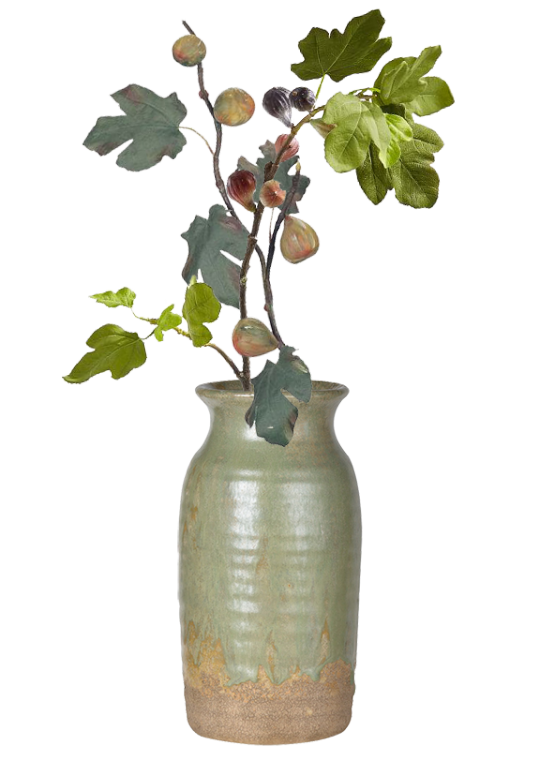
Birdfeed
Karina Iskandarsjah
Audiovisual and Text-based work
2022
Welcome, dear guests! The Dawat Yan Banquet is thrilled to share “Birdfeed” by Indonesian-born artist and curator, Karina Iskandarsjah. Karina is based in Toronto and is interested in topics around cultural hybridity, geopolitics, technology, and ecologies.
Responding to the topic of “florals and banquet”, Birdfeed : Ficus is the start of an exploration of plant genuses as a way to form connections across different cultures and histories. With immigrant narratives as the central focus, this video installation weaves together plant research, poetry, theory, and the artist’s personal journal entries.
Head over to dawatyanbanquet.com to experience Karina's dynamic, layered and evocative work.
#Dawat Yan Banquet#Dawat Yan Project#Karina Iskandarsjah#South Asia#Fig#Fig Tree#history#culture#tree#gathering space#Art#AGO#Art Gallery of Ontario#medical student#Dawat Yan#Banquet
1 note
·
View note
Text

Third Gender and the Mughal Court
Image: “Babur meeting a princess.” AD 1598 - National Museum, New Delhi
If you pay attention to this historic painting, members of the khwajasara community can be seen near the tent entrance. They are in service of the princess. There are ample new insights on the often overlooked and erased lived experiences and roles of khwajasaras, within Mughal banquet and court discourse.
Khwajasaras did not only manage the affairs of the harems, as several European historians and scholars have noted, but they also held highly significant positions within the Mughal courts and participated in political, public and cultural spheres.
“Foregrounding this largely unexplored aspect of Mughal history and, in that process, exploring the under-studied aspect of services provided by the ‘third gender’ seems important to develop a complete picture not only of the Mughal private life but also its public, political and cultural dimensions. The administrative and political role played by the khwajasaras has been underplayed or ignored in most writings on the Mughal state. For example, K.S Lal, Gavin Hambly and others, while acknowledging the multifaceted role played by khwajasaras, exclusively highlight their involvement in the harem. It is because of this narrow historical characterization that today the only space associated with the image of a Medieval Indian khwajasara is that of a Mughal harem. A perusal of the contemporary sources reflect that khwajasaras used to perform administrative, religious and managerial duties. Sometimes, the nature of the duty was similar to the ones usually undertaken by important nobles.” ~Scholar Lubna Irfan: ‘Third Gender’ and ‘Service’ in Mughal Court and Harem (Aligarh Muslim University)
#Dawat Yan Research#Dawat Yan Banquet#Mughal Court#Mughal Banquet#tdov#history#trans history#South Asia#pre colonization#khwajasara#third gender
27 notes
·
View notes
Text

“For a displaced person, who knows that home can neither be remade here nor necessarily found back there, food can metabolize into memories that may conjure a sense of place.”
~Amin Alsaden, Dawat Yan Project
Welcome, dear guests! Please visit the Dawat Yan Banquet to experience digitally installed works by guest contributor, Amin Alsaden and banquet co-host, Mariam Magsi. Kindly bookmark the page and keep returning, as the Dawat Yan Banquet is a process-based residency that will unfold week by week.
Website: dawatyanbanquet.com
IG: @dawatyanproject
Research Blog: dawatyanproject.tumblr.com
The Dawat Yan Banquet website is designed by Eric Chengyang with the generous support of the AGOxRBC Artists in Residence Program, 2022.
#Dawat Yan Banquet#Dawat Yan Project#Dawat#Yan#Asia#archaeology#anthropology#Food#Home#AGO#Art Gallery of Ontario#Art#Dawat Yan
3 notes
·
View notes
Text

Arq-e-Gulab
(Essence of Rose)
Audio+Video, Poetry, ASMR, Performance
© Mariam Magsi, Dawat Yan Banquet
2022
Welcome, dear guests! The Dawat Yan Banquet is proud to present Arq-e-Gulab (Essence of Rose) an audio+video, ASMR, poetic and performative work by multidisciplinary artist and co-host, Mariam Magsi. Using rose petals and water in a crystal bowl, while wearing Balochi traditional, cultural garments conducive to the Magsi clan, the artist invites the “guest” or viewer to participate in a hand-washing ceremony to open the Dawat Yan Banquet.
Engaging with aesthetic and conceptual components of ritual and hospitality, while questioning hostile Western intolerances toward incoming migrant and refugee populations from certain countries in crisis, Mariam channels poetry, ASMR techniques, repetition and sound to create a soothing environment for the tired guest. Please visit dawatyanbanquet.com to experience “Arq-e-Gulab” and kindly bookmark the banquet website, as artist and community contributions will be updated week by week.
The Dawat Yan Banquet is a process-based residency hosted by Eric Chengyang and Mariam Magsi that is unfolding between the months of February and April, with the generous support of the AGOxRBC Artist in Residence Program, 2022. The Dawat Yan Banquet website is designed by Eric Chengyang. We hope you will enjoy your stay in the Dawat Yan Banquet. :)
IG: @dawatyanproject
Website: www.dawatyanbanquet.com
Blog: dawatyanproject.tumblr.com
#Dawat Yan Banquet#Dawat Yan Project#AGO#ArqEGulab#Rose#Rose Water#ritual#customs#culture#faith#Hadith#Residency#video#performance art#ASMR
4 notes
·
View notes
Text

Image: (Left) Nur Jehan and (Right) Nur Jehan's Plate Adorned with Rubies and Gold
(Note: Nur Jehan was the last and chief wife of the Mughal emperor Jahangir and is considered by historians to have been the real power behind the throne for much of her husband's reign. Nur Jahan was born Mehr-un-Nissa, the daughter of a Grand Vizier who served under Akbar.)
“Around the world, South Asian Mughali (Mughal) food is known for its richness and flavor. It encompasses a range of ingredients and spice levels, from mildly sweet to extremely hot. Mughal cuisine is the amalgamation of Indian, Persian and Middle Eastern influences, which reflected the breadth and diversity of the empire. The dishes of each historical era of the empire is colored with the need of the time, and the legacy of its respective emperor. Because the official court language of the Mughals was Persian, many of the dishes will have Persian or Turkic-origin names.
Mughal cuisine reached its apogee at the time of Shah Jehan in the 17th Century. As someone who enjoyed pomp and circumstance, he pushed for dishes with more spices and more medicinal properties in court. This era also includes the famous story of Queen Mumtaz Mahal ordering chefs to create the dish now known as biryani, as a way to feed undernourished soldiers.
In comparison, Aurangzeb who was said to be the most conservative of the Mughals, largely remained vegetarian most of his life. However, he did have a penchant for a special biryani with dried apricots, almonds and curd. As the fissures in the Mughal empire began to grow, the culinary focus shifted from Delhi and Lahore to Hyderabad and Lucknow. The kitchen often moved with the emperor during campaigns, and that resulted in the rise of Deccan and Mughal hybrid cuisines as the new culinary trend.”
Source: Delicious Roots: The History of Mughal Cuisine by Sadaf Shahzad
#Dawat Yan Banquet#Dawat Yan Project#Biryani#Mughlai Cuisine#Mughal Food#Pakistani Cuisine#decolonize food#culture#history
22 notes
·
View notes
Text

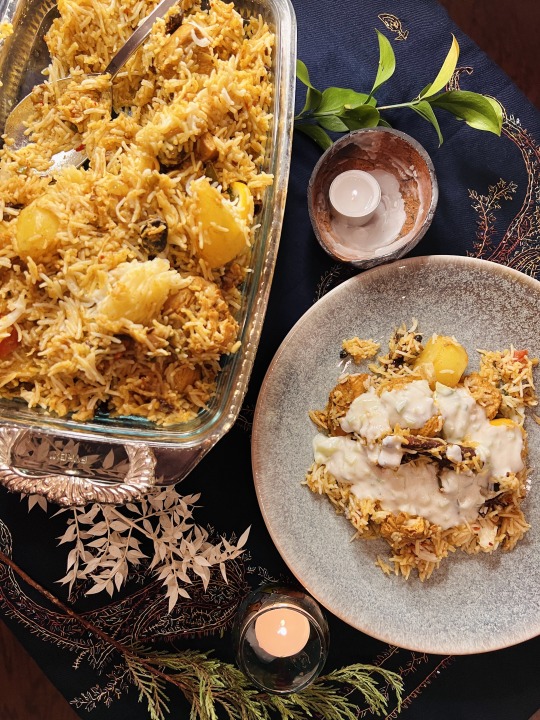
Dawat-e-Biryani
Audio+Video, Archives, Recipe and Storytelling
Mariam Magsi & Gordan Sumanski
Dawat Yan Banquet (AGOxRBC Artist in Residence Program)
2022
6 notes
·
View notes
Text
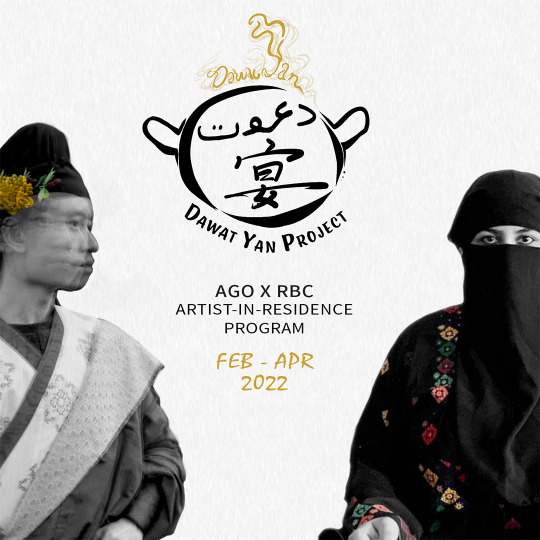


As the Dawat Yan Project, we are beyond excited to share this news with you: we are selected as one of the AGO x RBC Artists in Residence in 2022! During Feb-Apr, we will be creating a collaborative digital installation titled, Dawat Yan Banquet, in response to the theme of “Friendship Near & Far”.
By welcoming friends from near and far, we will test the tangibility and creative boundaries of digital media, and lift the exclusionary boundaries of the traditional banquet, as the Dawat Yan Banquet transcends barriers of race, class, gender, and geography.
By welcoming friends from near and far, we will test the tangibility and creative boundaries of digital media, and lift the exclusionary boundaries of the traditional banquet, as the Dawat Yan Banquet transcends barriers of race, class, gender, and geography.
Please stay tuned for the Dawat Yan Banquet, digitally accessible at the Art Gallery of Ontario in the upcoming months, and check out Dawat Yan Project’s Tumblr blog. While we are working on the web-based “banquet” installation during our residency, we will share our research and progress stories on our Tumblr: dawatyanproject.tumblr.com
Image 1: A duo-portrait with Eric (left) in a Tang-styled hanfu and Mariam (right) in her mother’s niqab (face covering), hijab (head covering) and a traditional, cultural garment from Balochistan, gifted by members of the Magsi Clan. Furthermore, the Dawat Yan Project’s logo is in the middle with text underneath that says: “AGO X RBC Artist-in-Residence Program; February-April, 2022”. Photo and design by the Dawat Yan Project.
Image 2: Mariam’s profile photo in black and white. Photographed by Magsi
Image 3: Eric’s profile photo in black and white. Photographed by Chengyang
When sharing or engaging with our works from the residency, we encourage you to use the following hashtags: #DawatYanBanquet
#digital art#asian art#canadian art#asian culture#chinese culture#pakistani culture#traditional clothing#Art Gallery Of Ontario#visual storytelling#DawatYanProject
7 notes
·
View notes
Text
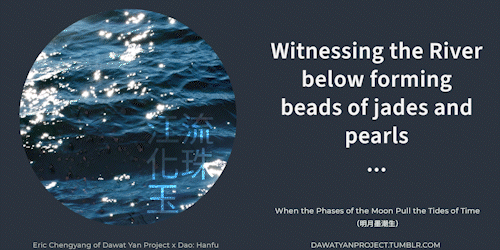
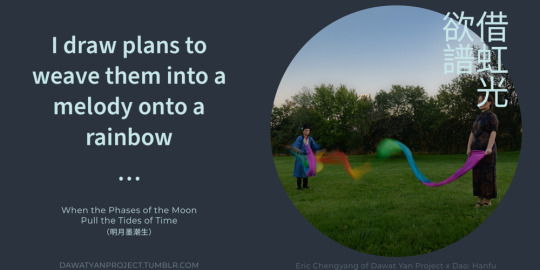
江流化珠玉 欲借譜虹光
Witnessing the River below forming beads of jades and pearls, I
Draw plans to weave them into a melody onto a rainbow
...
🌗
From “When the Phases of the Moon Pull the Tides of Time (明月墨潮生)” - by Eric Chengyang (墨月无觞) on
Last Quarter / Neap Tide / 9:26 pm from Toronto
_
This project is a crossover project between Dawat Yan Project & Dao: Hanfu; therefore, the visual poetry and its corresponding connotations will be distributed between two blogs, alternatively.
As always, a collection of our ongoing “Moon” series is now available HERE.
–
Due to my work schedule this week, the update for next part is changed to the next 🌓
#visual poetry#photography#moon#traditional clothing#projectmoon#contemporary art#旗袍#汉服#chinese clothes#long exposure#experimental art
4 notes
·
View notes
Text


低眉观山河 千秋空硯觴
Lowering their frowns,
The gaze landed at
The Mountains
And Seas below,
For a while.
For so long,
At least a thousand autumns have gone by
In silence, and left behind a riddle:
“Who has emptied
The inkstone
And shang-vessel?”
…
🌓
From “When the Phases of the Moon Pull the Tides of Time (明月墨潮生)” - by Eric Chengyang (墨月无觞) on
First Quarter / Neap Tide / 8:36 pm from Toronto
–
Note: as this week's segment contains culturally specific terms, a connotation will be provided on a later update.
_
This project is a crossover project between Dawat Yan Project & Dao: Hanfu; therefore, the visual poetry and its corresponding connotations will be distributed between two blogs, alternatively.
As always, a collection of our ongoing “Moon” series is now available HERE.
–
To be continued during the the next moon phase: 🌗
#visual poetry#photography#contemporaryart#moon#traditional clothing#concrete poetry#hanfu#chinese clothes#projectmoon
4 notes
·
View notes
Text

清風拂雲水 暗香溅衫裳
Suddenly,
A gust passed by and muddled
The imagery of clouds and water:
The subtle scent stained Wangshu’s upper shan,
And splattered across their lower chang.
…
🌑
From “When the Phases of the Moon Pull the Tides of Time (明月墨潮生)” - by Eric Chengyang (墨月无觞) on
New Moon / Spring Tide / 2:43 am from Toronto
–
Note: since this week's segment is already quite illustrative with both the text and images, there will be no connotations shared this week.
However, a more detailed text will be provided on a later date to introduce the cultural & fashion concept mentioned in the excerpts from this week (Dec's New Moon) and last week (Nov's Last Quarter).
–
As always, a collection of our ongoing “Moon” series is now available HERE.
–
To be continued during the the next moon phase: 🌓
#projectmoon#visual poetry#long exposure#visual art#photography#chinese clothes#hanfu#moon#moonphases#night photography
5 notes
·
View notes
Text
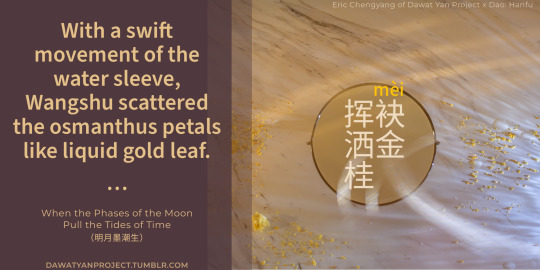

挥袂洒金桂 流光染漣漪
With a swift movement of the water sleeve,
Wangshu scattered the osmanthus petals
Like liquid gold leaf.
Among the shimmering gold, they caught a fleeting luminance
To dye the ripples.
...
🌗
From “When the Phases of the Moon Pull the Tides of Time (明月墨潮生)” - by Eric Chengyang (墨月无觞) on
Last Quarter Moon / Neap Tide / 7:27 am from Toronto
–
Updated on 2021.12.04: upon consideration, I tried to avoid overexplaining by focusing more on the larger cultural context, thus, there will be no connotations written for this excerpt.
Instead, a more detailed text will be provided on a latter day to introduce the fashion-cultural terms mentioned in the poem.
–
This project is a crossover project between Dawat Yan Project & Dao: Hanfu; therefore, the visual poetry and its corresponding connotations will be distributed between two blogs, alternatively.
In addition, a collection of our ongoing "Moon" series is now available HERE.
–
To be continued during the the following moon phase: 🌚
4 notes
·
View notes
Text
Connotations # 2 | When the Phases of the Moon Pull the Tides of Time (明月墨潮生)
1. "明月舞清影" | "... playfully dancing with the shadows"
此处化用于苏轼 《水调歌头·明月几时有》中的名句:
This expression is an homage to Su, Shi’s famous ci, “Shuidiao Getou (Water Melody)”, which was mentioned in Eric's mooncake-themed essay posted during the previous First Quarter Moon, on Oct. 12. The original phrase and its translation is shown below:
“明月几时有?......起舞弄清影.......” - 苏轼 《水调歌头·明月几时有》
“How long has the bright Moon been living in the sky?...[I would] invite the shadow to dance with me...” - by Su, Shi; an excerpt translated by Eric Chengyang
2. 光陰 (光阴) | guang-yin: “the light and shade of time”
指日月之推移, 白昼与黑夜之轮替
即时间
The Chinese term, guang-yin (lit. light and darkness), refers to the daily alternation between day and night. Consequently, "guang-yin (light & darkness)" is often used as a literary synonym of time.
--
Please stay tuned for the next Last Quarter Moon.


明月舞清影 光陰墨潮汐
As the brilliant Moon was playfully dancing
With the shadows,
Wangshu painted the tidal waves
With the light and shade borrowed from time
...
🌓
From “When the Phases of the Moon Pull the Tides of Time (明月墨潮生)” - by Eric Chengyang (墨月无觞) on
First Quarter Moon / Neap Tide / 7:45 am from Toronto
–
Connotations will be posted on @dawatyanproject this week.
This project is a crossover project between Dawat Yan Project & Dao: Hanfu: the visual poetry and its corresponding connotations will be distributed between two blogs, alternatively.
–
To be continued during the the following moon phase: 🌗
6 notes
·
View notes